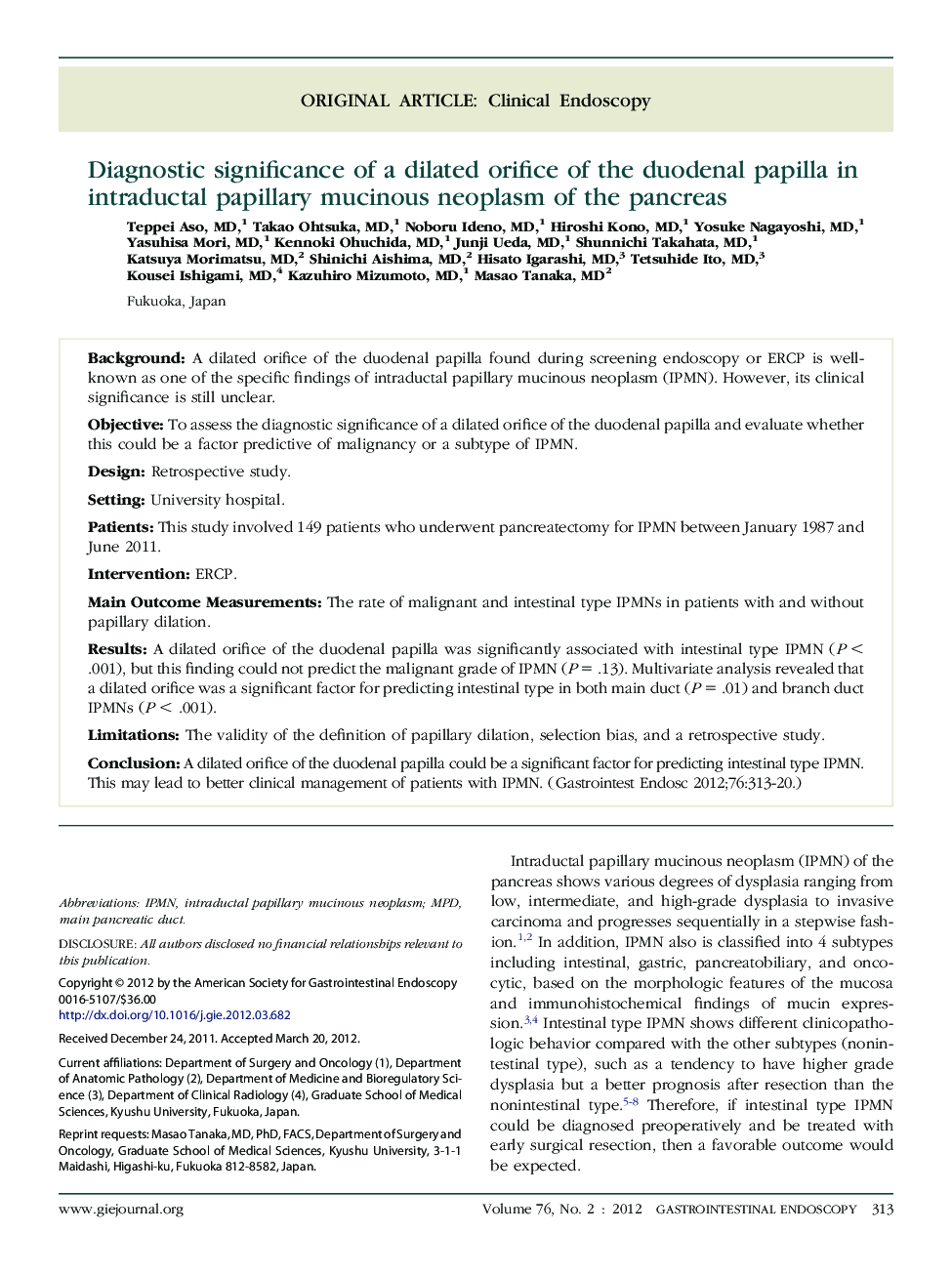| Article ID | Journal | Published Year | Pages | File Type |
|---|---|---|---|---|
| 3304825 | Gastrointestinal Endoscopy | 2012 | 8 Pages |
BackgroundA dilated orifice of the duodenal papilla found during screening endoscopy or ERCP is well-known as one of the specific findings of intraductal papillary mucinous neoplasm (IPMN). However, its clinical significance is still unclear.ObjectiveTo assess the diagnostic significance of a dilated orifice of the duodenal papilla and evaluate whether this could be a factor predictive of malignancy or a subtype of IPMN.DesignRetrospective study.SettingUniversity hospital.PatientsThis study involved 149 patients who underwent pancreatectomy for IPMN between January 1987 and June 2011.InterventionERCP.Main Outcome MeasurementsThe rate of malignant and intestinal type IPMNs in patients with and without papillary dilation.ResultsA dilated orifice of the duodenal papilla was significantly associated with intestinal type IPMN (P < .001), but this finding could not predict the malignant grade of IPMN (P = .13). Multivariate analysis revealed that a dilated orifice was a significant factor for predicting intestinal type in both main duct (P = .01) and branch duct IPMNs (P < .001).LimitationsThe validity of the definition of papillary dilation, selection bias, and a retrospective study.ConclusionA dilated orifice of the duodenal papilla could be a significant factor for predicting intestinal type IPMN. This may lead to better clinical management of patients with IPMN.
